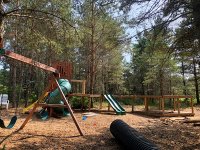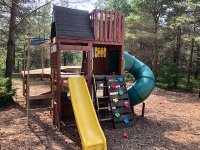I use the powdered colourants often. The biggest problem I have is getting a perfect match between batches. No big deal if you are making a big batch of concrete but if making multiple it is a challenge to get them to match perfectly. May be obvious for something like parging. Measure, measure, measure.Builders suppliers carry powdered pigments. I've never used them but hazard a guess matching colours will be a challenge as wet and dry will differ.
The next problem is the cured colour will not match the wet colour so you either experiment or just go with it.
Final problem, even when I mix the crap out of it. There will be some variation within the mix. This actually works out well when making concrete counter-tops as it gives a more natural variation. Mix, mix, mix....




















